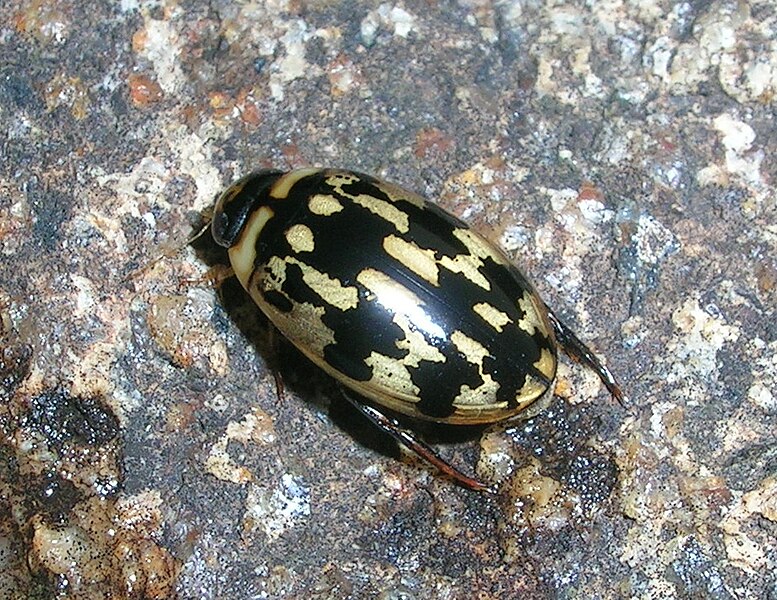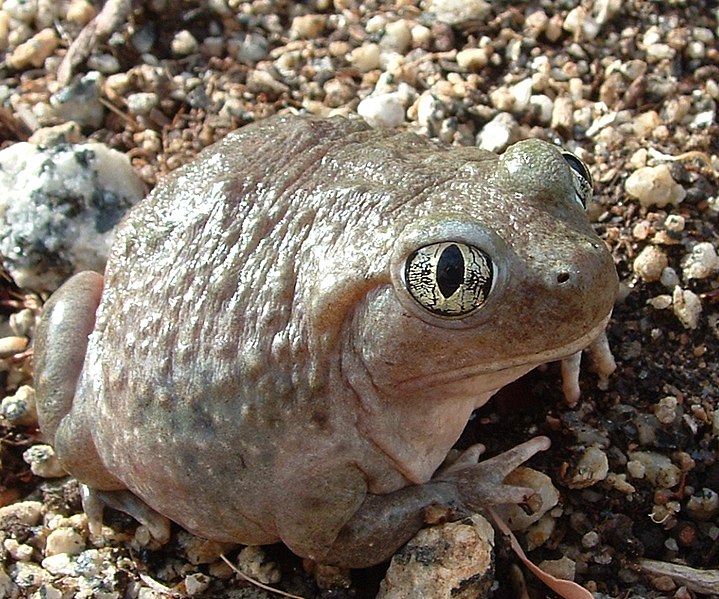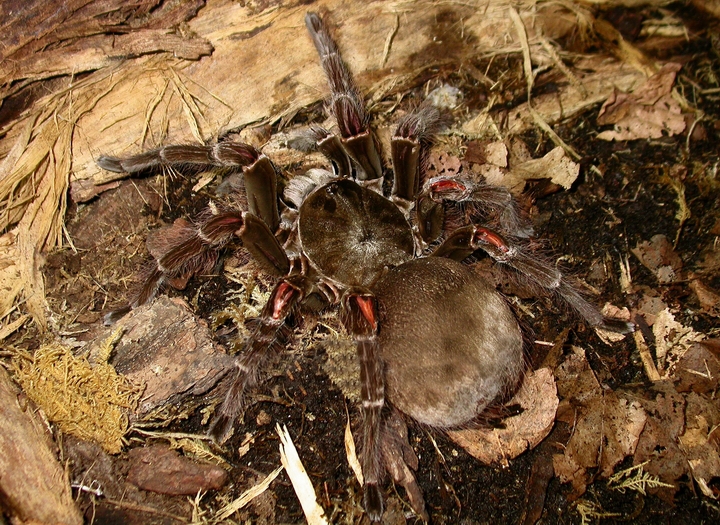 Please see Part I of this article for information on the natural history of the Sunburst or Marbled Diving Beetle (Thermonectes marmoratus), the Green Diving Beetle (Thermonectes sp.) and related insects. These wonderfully interesting aquatic beetles sometimes appear in the pet trade, and they and related species are also rather easy to collect. Today we’ll take a look at their captive husbandry.
Please see Part I of this article for information on the natural history of the Sunburst or Marbled Diving Beetle (Thermonectes marmoratus), the Green Diving Beetle (Thermonectes sp.) and related insects. These wonderfully interesting aquatic beetles sometimes appear in the pet trade, and they and related species are also rather easy to collect. Today we’ll take a look at their captive husbandry.
Habitat
The beetle aquarium should be tightly covered, as all species can and do fly, especially at night. The tank should be stocked with a variety of live aquatic plants (i.e. Elodea, Anachris, Water Hyacinth) and sticks…despite being strong swimmers, Diving Beetles need to take frequent breaks by clinging to submerged objects; egg deposition occurs on live plants. Read More »
 That Reptile Blog – Reptile, Amphibian and Exotic Pet Care and Information
That Reptile Blog – Reptile, Amphibian and Exotic Pet Care and Information




